From Farm to Table: The Journey of Key Moroccan Ramadan Products
Ramadan in Morocco is a time of spiritual reflection, community, and culinary traditions that bring families together around the iftar table. Central to these traditions are key ingredients like dates, figs, honey, and argan oil, each with a rich story that begins in the fertile fields and cooperatives of Morocco. These products nourish the body and carry the essence of Moroccan culture, sustainability, and the hard work of many people. Let’s explore their journey from farm to table.
Dates: The Sweet Symbol of Ramadan
Dates are a key part of Ramadan, often the first food to break the fast. In Morocco, the best dates come from the Ziz and Draa Valleys, where palm groves stretch across the desert. The journey of dates starts with farmers who climb tall palm trees to harvest the fruit by hand, a practice passed down through generations.
After harvesting, the dates are sorted and cleaned. Many farms now use sustainable irrigation methods, like drip systems, to save water in these dry regions. The dates are then taken to local cooperatives, where women often play a key role in packaging and preparing them for market. By the time they reach the busy souks of cities like Marrakech and Fez, these dates are more than just a product—they are a symbol of Moroccan resilience and tradition.
Figs: A Gift from the Atlas Mountains
Figs are another important part of Moroccan Ramadan tables, enjoyed fresh or dried. The journey of figs starts in the fertile valleys of the Atlas Mountains, where farmers grow fig trees using traditional methods. The harvest season, usually in late summer, is a community effort involving entire families.
Once harvested, the figs are either sun-dried on rooftops or made into jams and preserves. Many cooperatives in rural areas focus on sustainable practices, like organic farming and fair trade, to support local farmers. These cooperatives also empower women by giving them training and jobs. By the time figs reach the iftar table, they carry the flavors of the mountains and the hard work of those who grew them.
Honey: The Liquid Gold of Morocco
Moroccan honey is known for its quality and variety, with flavors like thyme, eucalyptus, and orange blossom. The journey of honey starts in the apiaries across the country, from the forests of the Rif Mountains to the citrus groves of Souss-Massa. Beekeepers, often working in small family operations, take care of their hives to ensure the bees thrive in their natural habitats.
Sustainable beekeeping practices are becoming more common, with many cooperatives focusing on organic certification and protecting biodiversity. After extraction, the honey is filtered and packaged by local artisans, many of whom are women. In the markets, honey is sold in traditional clay pots or glass jars, ready to sweeten Moroccan pancakes (msemen) or tagines during Ramadan.
Argan Oil: The Green Gold of the Souss Region
Argan oil, often called "liquid gold," is a prized ingredient in Moroccan cuisine and a symbol of the country’s rich biodiversity. The journey of argan oil starts in the argan forests of the Souss region, where Berber women collect the nuts from the thorny argan trees. This labor-intensive process is deeply rooted in tradition and community.
The nuts are cracked open to extract the kernels, which are cold-pressed to make the oil. Many cooperatives in the region are led by women, providing jobs and preserving traditional knowledge. Sustainable practices, like reforestation and fair trade, help ensure the long-term future of argan oil production. During Ramadan, argan oil is used to add flavor to salads, dips, and even desserts, bringing a nutty taste and a touch of luxury to the iftar table.
The People Behind the Products
Behind every date, fig, jar of honey, or bottle of argan oil are the farmers, artisans, and cooperatives who work hard to preserve these traditions. Their work is about more than just producing food—it’s about supporting communities, protecting the environment, and honoring cultural heritage.
As Moroccans gather around the iftar table during Ramadan, they celebrate the journey of these essential ingredients. From the sun-drenched fields to the busy markets, each product tells a story of resilience, sustainability, and the enduring spirit of Morocco.
This Ramadan, as you enjoy the sweetness of dates, the richness of honey, or the nutty aroma of argan oil, take a moment to appreciate the hands that brought them to your table. Their work is a testament to the beauty of Moroccan traditions and the power of food to bring people together.

